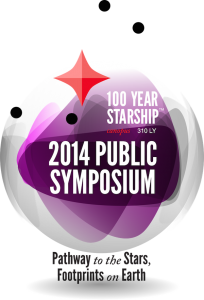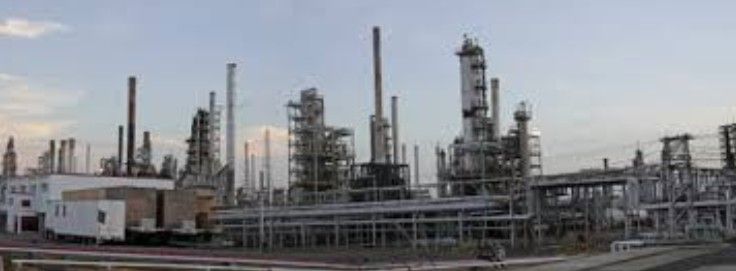The Lifeboat Foundation Worldwide Ambassador Mr. Andres Agostini’s own White Swan Scientific-Knowledge Doubling Progression, Countermeassuring Every Unthinkable Black Swan, at https://lifeboat.com/blog/2014/04/white-swan
On Scientific-Knowledge Doubling Progression
(Taken from the White Swan at https://lifeboat.com/blog/2014/04/white-swan)
A) “…HUMAN KNOWLEDGE IS DOUBLING EVERY TEN YEARS [AS PER THE 1998 STANDARDS]…” [226]
B) “…COMPUTER POWER IS DOUBLING EVERY EIGHTEEN MONTHS. THE INTERNET IS DOUBLING EVERY YEAR. THE NUMBER OF DNA SEQUENCES WE CAN ANALYZE IS DOUBLING EVERY TWO YEARS…” [226]
C) “…BEGINNING WITH THE AMOUNT OF KNOWLEDGE IN THE KNOWN WORLD AT THE TIME OF CHRIST, STUDIES HAVE ESTIMATED THAT THE FIRST DOUBLING OF THAT KNOWLEDGE TOOK PLACE ABOUT 1700 A.D. THE SECOND DOUBLING OCCURRED AROUND THE YEAR 1900. IT IS ESTIMATED TODAY THAT THE WORLD’S KNOWLEDGE BASE WILL DOUBLE AGAIN BY 2010 AND AGAIN AFTER THAT BY 2013…” [226]
D) “…KNOWLEDGE IS DOUBLING BY EVERY FOURTEEN MONTHS…” [226]
E) “…MORE THAN THE DOUBLING OF COMPUTATIONAL POWER [IS TAKING PLACE] EVERY YEAR…” [226]
F) “…The flattening of the world is going to be hugely disruptive to both traditional and developed societies. The weak will fall further behind faster. The traditional will feel the force of modernization much more profoundly. The new will get turned into old quicker. The developed will be challenged by the underdeveloped much more profoundly. I worry, because so much political stability is built on economic stability, and economic stability is not going to be a feature of the flat world. Add it all up and you can see that the disruptions and going to come faster and harder. No one is immune — not me, not you, not Microsoft. WE ARE ENTERING AN ERA OF CREATIVE DESTRUCTION ON STEROIDS. Dealing with flatism is going to be a challenge of a whole new dimension even if your country has a strategy. But if you don’t have a strategy at all, well, again, you’ve warned…” [226]
G) “…By the end of the twentieth century, science had reached the end of an era, unlocking the secrets of the atom, unraveling the molecule of life, and creating the electronic computer. With these three fundamental discoveries, triggered by the quantum revolution, the DNA revolution, and the computer revolution, the basic laws of matter, life, and computation were, in the main, finally solved [….] That epic phase of science is now drawing to a close; one era is ending and another is only beginning [….] The next era of science promises to be an even deeper, more thoroughgoing, more penetrating one than the last [….] Clearly, we are on the threshold of yet another revolution. HUMAN KNOWLEDGE IS DOUBLING EVERY TEN YEARS [AS PER THE 1998 STANDARDS]. In the past decade, more scientific knowledge has been created than in all of human history. COMPUTER POWER IS DOUBLING EVERY EIGHTEEN MONTHS. THE INTERNET IS DOUBLING EVERY YEAR. THE NUMBER OF DNA SEQUENCES WE CAN ANALYZE IS DOUBLING EVERY TWO YEARS …” Brackets are of the author.
And G) above continues here:
“… Almost daily, the headlines herald new advances in computers, telecommunications, biotechnology, and space exploration. In the wake of this technological upheaval, entire industries and lifestyles are being overturned, only to give rise to entirely new ones. But these rapid, bewildering changes are not just quantitative. They mark the birth pangs of a new era [….] FROM NOW TO THE YEAR 2020, SCIENTISTS FORESEE AN EXPLOSION IN SCIENTIFIC ACTIVITY SUCH AS THE WORLD HAS NEVER SEEN BEFORE. IN TWO KEY TECHNOLOGIES, COMPUTER POWER AND THE DNA SEQUENCING, WE WILL SEE ENTIRE INDUSTRIES RISE AND FALL ON THE BASIS OF BREATHTAKING SCIENTIFIC ADVANCES. SINCE THE 1950S, THE POWER OF OUR COMPUTERS HAS ADVANCED BY A FACTOR OF ROUGHLY TEN BILLION. IN FACT, BECAUSE BOTH COMPUTER POWER AND DNA SEQUENCING DOUBLE ROUGHLY EVERY TWO YEARS, ONE CAN COMPUTE THE ROUGH TIME FRAME OVER WHICH MANY SCIENTIFIC BREAKTHROUGHS WILL TAKE PLACE … ”
And G) above continues here:
“… BY 2020, MICROPROCESSORS WILL LIKELY BE AS A CHEAP AND PLENTIFUL AS SCRAP PAPER, SCATTERED BY THE MILLIONS INTO ENVIRONMENT, ALLOWING US TO PLACE INTELLIGENT SYSTEMS EVERYWHERE. THIS WILL CHANGE EVERYTHING AROUND US, INCLUDING THE NATURE OF COMMERCE, THE WEALTH OF NATIONS, AND THE WAY WE COMMUNICATE, WORK, PLAY, AND LIVE…” [226]
H) “…The knowledge revolution is taking place in small, sharply defined areas. One company generates more U.S. patents than 139 countries do together [….] This [revolution] generates new EMPIRES and new ghettos [….] It slams into existing systems and destroys them while creating new systems. Countries and individuals can either surf new and powerful waves of change — or try to stop them and get crushed…” [226]
I) “…Nanotechnologies are broad concept, it’s simply refers to technology where the key features in measuring the small number of nanometers. A NANOMETER IS THE DIAMETER OF FIVE CARBON ATOMS SO IT’S VERY CLOSE TO THE MOLECULAR LEVEL AND WE ALREADY HAVE NEW MATERIALS AND DEVICES THAT HAD BEEN MANUFACTURED AT THE NANOSCALE. IN FACT, CHIPS TODAY, THE KEY FEATURES ARE 50 OR 60 NANOMETERS SO THAT IS ALREADY NANOTECHNOLOGY. The true promise of nanotechnology is that ultimately we’ll be able to create devices that are manufactured at the molecular level by putting together, molecular fragments in new combinations so, I can send you an information file and a desktop nanofactory will assemble molecules according to the definition in the file and create a physical objects so I can e-mail you a pair of trousers or a module to build housing or a solar panel and WE’LL BE ABLE TO CREATE JUST ABOUT ANYTHING WE NEED IN THE PHYSICAL WORLD FROM INFORMATION FILES WITH VERY INEXPENSIVE INPUT MATERIALS. You can… I mean, just a few years ago if I wanted to send you a movie or a book or a recorded album, I would send you a FedEx package, now I can e-mail you an attachment and you can create a movie or a book from that …”
And I) above continues here:
“ … On the future, I’ll be able to e-mail you a blouse or a meal. So, that’s the promise of nanotechnology. Another promise is to be able to create devices that are size of blood cells and by the way biology is an example of nanotechnology, the key features of biology are at the molecular level. SO, THAT’S ACTUALLY THE EXISTENCE PROOF THAT NANOTECHNOLOGY IS FEASIBLE BUT BIOLOGY IS BASED ON LIMITED SIDE OF MATERIALS. EVERYTHING IS BUILT OUT OF PROTEINS AND THAT’S A LIMITED CLASS OF SUBSTANCES. WITH NANOTECHNOLOGY WE CAN CREATE THINGS THAT ARE FAR MORE DURABLE AND FAR MORE POWERFUL. One scientist designed a robotic red blood cell it’s a thousand times more powerful than the biological version so, if you were to replace a portion of your biological red blood cells with this respirocytes the robotic versions. You could do an Olympic sprint for 15 minutes without taking a breath or sit at the bottom of your pool for 4 hours …”
And I) above continues here:
“ … If I were to say someday you’ll have millions or even billions of these nanobots, nano-robots, blood cell size devices going through your body and keeping you healthy from inside, I might think well, that sounds awfully futuristic. I’d point out this already in 50 experiments in animals of doing exactly that with the first generation of nano engineered blood cell size devices. One scientist cured type-1 diabetes in rats with the blood cell size device. Seven nanometer pores let’s insulin out in the controlled fashion. At MIT, there’s a blood cell size device that can detect and destroy cancer cells in the bloodstream. These are early experiments but KEEP IN MIND THAT BECAUSE OF THE EXPONENTIAL PROGRESSION OF THIS TECHNOLOGY, THESE TECHNOLOGIES WILL BE A BILLION TIMES MORE POWERFUL IN 25 YEARS AND YOU GET SOME IDEA WHAT WILL BE FEASIBLE …” [226]
J) “…The world has profoundly changed … The challenges and complexity we face in our personal lives and relationships, in our families, in our professional lives, and in our organizations are of a different order of magnitude. In fact, many mark 1989 — the year we witnessed the fall of the Berlin Wall — as the beginning of the Information Age, the birth of a new reality, a sea change of incredible significance — truly a new era — Being effective as individuals and organizations is no longer merely an option — survival in today’s world requires it. But in order to thrive, innovate, excel, and lead in what Covey calls the new Knowledge Worker Age, we must build on and move beyond effectiveness [long-held assumptions, fallacies and flawed beliefs and faulty conventions]…Accessing the higher levels of human genius and motivation in today’s new reality REQUIRES A SEA CHANGE IN THINKING: a new mind-sets, a new skill-set, a new tool-set — in short, a whole new habit…” [226] Brackets are of the author.
K) “…All the notions we thought solid, all the values of civilized life, all that made for stability in international relations, all that made for regularity in the economy … in a word, all that tended happily to limit the uncertainty of the morrow, all that gave nations and individuals some confidence in the morrow … all this seems badly compromised. I have consulted all augurs I could find, of every species, and I have heard only vague words, contradictory prophecies, curiously feeble assurances. Never has humanity combined so much power with so much disorder, so much anxiety with so many playthings, so much knowledge with so much uncertainty…” [226]
L) “…It’s not the case that there are only a fixed number of positions, and if old people don’t die off, there’s no room for young people to come up with new ideas, because we’re constantly expanding knowledge …. Knowledge is growing exponentially. It’s doubling approximately every year ….The problem is I can’t get on the phone with you in the future and say, “Well, I’ve done it, I have lived forever ….This idea of creating a whole virtual body with nanobots, that’s more like a 2050 scenario. But by the 2030s we’ll be putting millions of nanobots inside our bodies to augment our immune system, to basically wipe out disease. One scientist cured Type I diabetes in rats with a blood-cell-size device already ….” [226]
L) here continues:
“… By 2029, computers will have emotional intelligence and be convincing as people. This implies that these are people with volition just like you and I, not just games that you turn on or off. Is it my father? You could argue that it’s a simulation. But it’s not something you can play with. You don’t want to bring someone back who might be very depressed because the world is very different than they expect and the people they know aren’t around …. It’s not us versus them. We’ve created these tools to overcome our limitations, and we’ve integrated with them already. A.I. today is not in three or four dark federal intelligence agencies; it’s in billions of mobile devices around the world[….] Early in this decade [2020s], humanity will have the requisite hardware to emulate human intelligence within a $1000 personal computer, followed shortly by effective software models of human intelligence toward the middle of the decade: this will be enabled through the continuing exponential growth of brain-scanning technology, which is doubling in bandwidth, temporal and spatial resolution every year, and will be greatly amplified with nanotechnology, allowing us to have a detailed understanding of all the regions of the human brain and to aid in developing human-level machine intelligence by the end of this decade …. Computers less than 100 m in size will be possible …” Brackets are of the author. [226]
M) “…The real trouble with this world of ours is not that it is an unreasonable world, nor that it is a reasonable one. The commonest kind of trouble is that it is nearly reasonable, but not quite. Life is not an illogicality; yet is a trap for logicians. It looks just a little more mathematical and regular than it is; its exactitude is obvious, but its inexactitude is hidden, its wildness lies in wait … ” [220] [226]
N) “…We believe that the goal is not to predict the future, but to imagine a future made possible by changes in technology, life style, work style, regulation, global geopolitics, and the like. And there are as many viable futures as there as imaginative firms that can understand deeply the at work right now which hold opportunities to become the author of the new. FOR THE FUTURE IS NOT WHAT WILL HAPPEN; THE FUTURE IS WHAT IS HAPPENING. The present and the future don’t about each other, neatly divided between the five-year plan and the great unknown beyond. Rather they are intertwined. Every company is in the process of becoming — of becoming an anachronism irrelevant to the future, or of becoming the harbinger of the future …” [226]
N) continues:
“…The long-term is not something that happens someday; it is what every company is building or forfeiting [….] Only those who can imagine and preemptively create the future will be around to enjoy it … Creating a compelling view of tomorrow’s opportunities and moving preemptively to secure the future are tasks for neither dilettantes nor the merely intellectual curious … Other companies, the laggards, were more interested in protecting the past than in creating the future … We believe, and will argue strongly, that a company must not only get to the future first, it must get there for less [….] And re-engineering charge is simply the penalty that a company must pay for not having anticipated the future [….] If senior executives don’t have reasonably detailed answers to the ‘future’ set of questions, and if the answers they do have are not substantially different from the ‘today’ answers, there is little chance their companies will remain market leaders [….] For much of the 1980s, IBM had been driving toward the future while looking out the rear-view mirror [….] Too often, profound thinking about the future and how to shape it occurs only when present success has been substantially eroded [….] Creating the future is more challenging than playing catch up, in that you have to create your own road map [….] The goal is not simply to benchmark a competitor’s products and processes and imitate its methods, but to develop an independent point of view about tomorrow’s opportunities and how to exploit them …” [226]
N) continues:
“ … Path-breaking is a lot more rewarding than benchmarking. One doesn’t get to the future first by letting someone else blaze the trail [….] Passengers will get to the future, but their fate will not be in their own hands. Theirs profits from the future will be modest at best. Those who drive industry revolution — companies that have a clear, permeated view of where they want tom take their industry and are capable of orchestrating resources inside and outside the company to get there first — will be handsomely rewarded… The future is not an extrapolation of the past. New industrial structures will supersede old industrial structures [….] Opportunities that at first blush seem evolutionary will prove to be revolutionary [….] A commitment substantial enough to beget the perseverance required to create the future must be based on something more than a hunch [….] But to create the future, a company must first be able to forget some of its past … ‘The future was predictable, but hardly anyone predicted it’ …” [87]. [226]
O) “…The future belongs not to those who possess a crystal ball, but those willing to challenge the biases and prejudices of the ‘establishment.’ The future belongs more to the unorthodox than it does to the prognosticators […and/or predictioneers…], more to the movement than to the starry-eyed …. The problem with the future is that is different …. If you are unable to think differently, the Future will always arrive as a [strategic or geostrategic Sputnik Moment] surprise …”
O) continues:
“ … Each revolution in art was based on a re-conception of reality. It wasn’t the canvas, the pigments, or the brushes that changed, but how the artist perceived the world. In the same sense, it’s not the tools that distinguish industry revolutionaries from hummed, not the information technology they harness, not the process they use, not their facilities. Instead, is their ability to escape the stranglehold of the familiar…” [28]. Brackets are of the author.
P) “…A primary theme in Alvin Toffler’s best selling book Future Shock is that society’s rate of change is increasing. Everything around us — including ourselves — is rapidly changing. Nothing is stable, permanent, constant, or fixed. Neither is risk. It is an indigenous element in the volatility of life. If anything, risk expands at a greater rate than the societal rate of change — due to its roots in uncertainty and ignorance of consequences, which multiply during mercurial instability … ” [226]
ON DOUBLINGS BY HARD SCIENCE, HI-TECH AND EFFICIENCY:
Incidentally, every Scientific and Technological Progression available that is into a “ …doubling …” order of magnitude is synthesized here:
Doubling A: (# 1 of 10)
“… HUMAN KNOWLEDGE IS DOUBLING EVERY TEN YEARS [AS PER THE 1998 STANDARDS]. In the past decade, more scientific knowledge has been created than in all of human history …” (http://bit.ly/1nOc5Xm ). Brackets are of the author. [226]
Doubling B: (# 2 of 10)
“… COMPUTER POWER IS DOUBLING EVERY EIGHTEEN MONTHS. THE INTERNET IS DOUBLING EVERY YEAR. THE NUMBER OF DNA SEQUENCES WE CAN ANALYZE IS DOUBLING EVERY TWO YEARS …” (http://bit.ly/1gn4CdX ) [226]
Doubling C: (# 3 of 10)
“ …IN FACT, BECAUSE BOTH COMPUTER POWER AND DNA SEQUENCING DOUBLE ROUGHLY EVERY TWO YEARS, ONE CAN COMPUTE THE ROUGH TIME FRAME OVER WHICH MANY SCIENTIFIC BREAKTHROUGHS WILL TAKE PLACE [….] BY 2020 …” (http://bit.ly/1lZQ1Vc) [226]
Doubling D: (# 4 of 10)
“…SCIENTIFIC MANPOWER IS DOUBLING EVERY 12 YEARS IN A RATE OF GROWTH MORE THAN THREE TIMES THAT OF OUR POPULATION AS A WHOLE, DESPITE THAT, THE VAST STRETCHES OF THE UNKNOWN AND THE UNANSWERED AND THE UNFINISHED STILL FAR OUTSTRIP OUR COLLECTIVE COMPREHENSION…” [80] (http://1.usa.gov/1eyRLTK). [226]
Doubling E: (# 5 of 10)
“ …THE FIRST DOUBLING OF THAT KNOWLEDGE TOOK PLACE ABOUT 1700 A.D. THE SECOND DOUBLING OCCURRED AROUND THE YEAR 1900. IT IS ESTIMATED TODAY THAT THE WORLD’S KNOWLEDGE BASE WILL DOUBLE AGAIN BY 2010 AND AGAIN AFTER THAT BY 2013…” [37] (http://bit.ly/1iptmkn). [226]
Doubling F: (# 6 of 10)
“…[THERE IS A] DOUBLING EVERY TWO YEARS [REGARDING THE TECHNOLOGICAL ADVANCEMENT OF] SOLAR ENERGY BY APPLYING NANOTECHNOLOGY TO SOLAR PANELS…” [177] (http://bit.ly/1jgckIJ). Brackets are of the author. [226]
Doubling G: (# 7 of 10)
“…NANO-GENETIC SEQUENCING DATA … IS DOUBLING EVERY YEAR…” [177] (http://slidesha.re/1f3MUH2). [226]
Doubling I: (# 8 of 10)
“…KNOWLEDGE IS DOUBLING BY EVERY FOURTEEN MONTHS…” [177] (http://bit.ly/1dc8Zb4). [226]
Doubling J: (# 9 of 10)
“…MORE THAN THE DOUBLING OF COMPUTATIONAL POWER [IS TAKING PLACE] EVERY YEAR…” [177] (http://bit.ly/1mn8Btl). Brackets are of the author. [226]
Doubling K: (# 10 of 10)
“…Like Moore’s Law for silicon electronics, which says that computers are growing exponentially smaller and more powerful every year, molecular systems developed with DNA nanotechnology have been doubling in size roughly every three years,…” says Professor Erik Winfree at the California Institute of Technology (Caltech). [197] (http://bit.ly/1f3NEMq). [217] [226]
END OF CITATIONS.























































